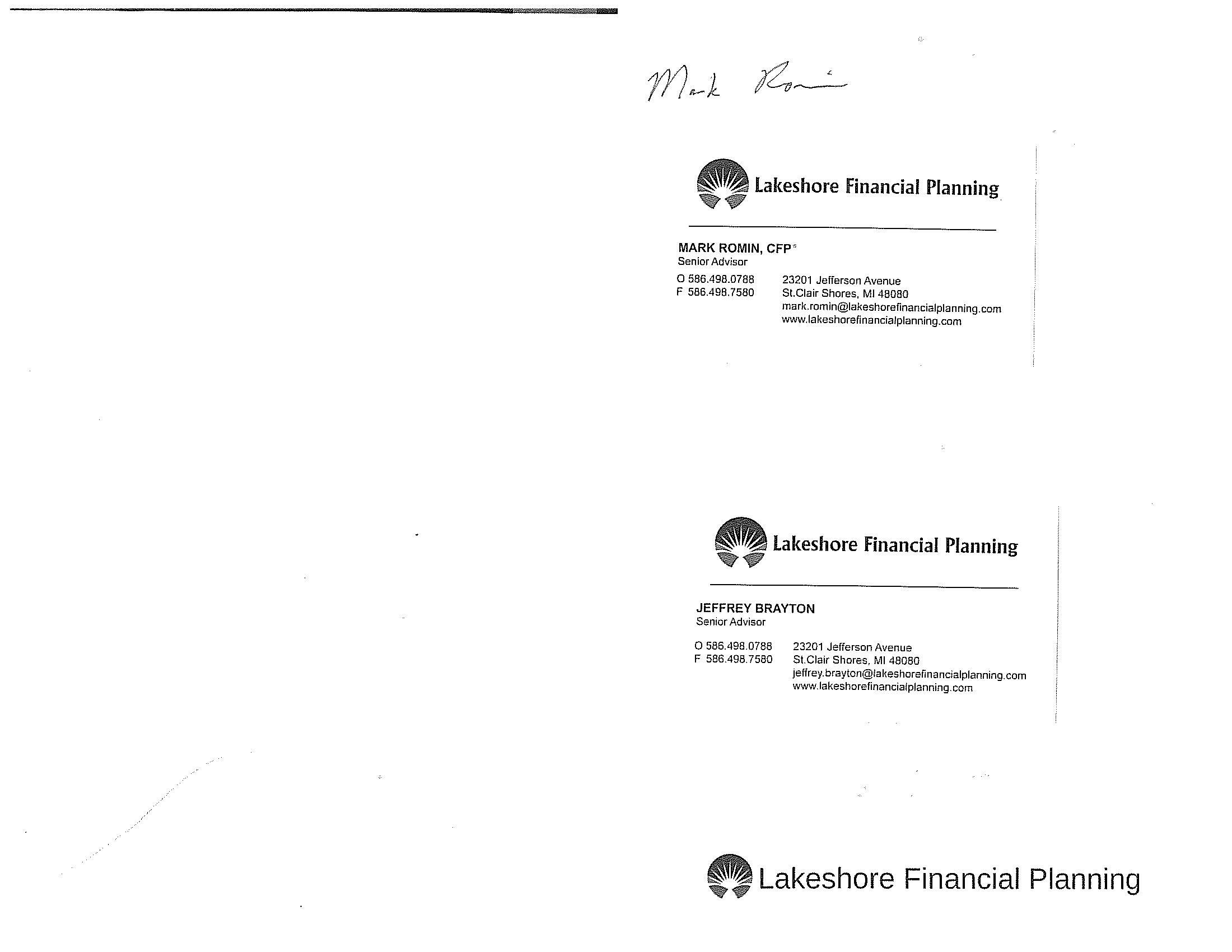

Pat
Tina
Sarah



Pat
Tina
Sarah

“I can’t support this with hard facts (yet), but it’s possible that the resiliency of the US economy and strength of the stock market is in some way reflecting a wave of productivity and innovation brought on by the 2020 pandemic.” Jeff Brayton 3rd Quarter 2023 Newsletter
In 20-plus years of writing this newsletter I have NEVER quoted myself. Honestly, it feels ridiculous and egotistical, and I’ll probably never do it again. But allow me this one instance because it fits so perfectly with the theme of my section this quarter: productivity. And there was certainly nothing brilliant or particularly original about my comment. I’ve learned through reading history that periods of severe economic disruptions, like wars and pandemics, are often followed by periods of unusually high innovation. I was simply wondering if Covid shutdowns would follow historical patterns.
The hard facts we did not have are now available, and they are thus far confirming the idea that a surge in productivity and innovation has been a key factor in helping the US economy avoid a recession that many experts were calling unavoidable.
Productivity growth is perhaps the single most important determinant of growth in real wages (net of inflation) and living standards. More to the immediate point of the stock market and your portfolio, higher productivity leads to higher corporate profits and stock prices. I believe it’s safe to say the rise in the stock market year to date has been driven at least partially, and possibly mainly, by the recent rise in productivity.
Worker productivity gains had slowed in the US in recent years, but the pandemic pushed businesses to invest in new ways to operate more efficiently and meet changing consumer wants and needs. The uptick in worker efficiency recorded in the second half of 2023 (and reported after our 3rd quarter newsletter) was so strong I decided to write to you about it. Labor productivity increased by an estimated 3.3% in last year’s fourth quarter. That is almost triple the 1.2% growth in the past decade and even above the 2.8% average annual growth rate seen during the last productivity boom from 1995 to 2005.
The seeds of the recent productivity boom were planted before the COVID-19 outbreak. Economists believe the pandemic, and the global response, may have pushed forward innovation and operational efficiency by as much as a decade. I want to touch briefly on three of the specific forces behind these impressive gains. Feel free to share these with friends and family at parties and BBQs this summer!
Five of the largest technology companies in the world (all US-based) invested $400 billion in new operations and research and development. Investments, particularly in technology, historically have been a significant driver of worker productivity growth.
Additionally, real manufacturing construction spending doubled from 2022 to 2023. This will give US workers more efficient factories and equipment in the coming years. Government funded research is more controversial (and inflationary), but historically has improved productivity. Recent legislation, including the Chips Act and Inflation Reduction Act, should help boost productivity for years to come.
While more challenging to measure, the pandemic caused massive shifts in the US and global job market. It’s estimated that nearly 100 million jobs turned over from 2021 to 2022. Many older workers left the workforce never to return (The Great Resignation) while younger workers moved from companies unable to adapt and survive to more efficient and profitable companies. It’s a brutal economic fact that recessions and depressions force out marginal workers and businesses. This is exactly what happened because of pandemic mandated shutdowns. You don’t have to agree or disagree with the global response to understand the economic impact. Capital and labor shifted to more productive sectors and companies. Finally, although I admit I am not a fan of work-from- home employment situations, it does appear that well-organized hybrid workers are more productive. The research is still new, but it appears a hybrid of three days in the office and two days working from home is the productivity sweet spot. Not at our office. We are old school — all in, everyday.
Americans filed 17.3 million new business applications over the past four years, which is more than double pre-pandemic levels (Source: U.S. Census Bureau). As in the past, many of these new businesses have failed or will fail; however, many of these start-ups are now entering their third and fourth year of operation. This means many of these new businesses have navigated through the difficult
start-up period and are now profitable and productive contributors to the overall economy. New businesses play a particularly important role in overall productivity growth because they generally launch with the newest technologies and workers with up-to-date skills.
Immigration plays a significant role in economic growth. Historically, immigration has led to greater productivity over time, in part because immigrants tend to start companies at almost twice the rate of the native population. Be cautious of anyone wanting to shut the borders. Given demographic trends, immigration is critical. The handling of immigration is the problem.
March 18, 2019
Martin & Marsha Lynch 43347 Nebel Trl Clinton Twp MI 48038-2465
Dear Martin & Marsha:
Are these recent impressive productivity growth numbers a blip, or are they part of a longer-term trend? Only time will tell, but the underlying factors I’ve written about here should provide tailwinds for years to come. Innovation accelerated at unusually high rates, in areas like Artificial Intelligence, mRNA vaccines and medicine, green transition technologies including nuclear fusion, cloud computing, robotics, 3D printing, quantum computing, material sciences, nanotechnology, and even psychedelics (groovy, huh). It’s impossible to predict the longer-term impact of advances in any of these areas, but some have the potential to be economic game changers. Warren Buffet has often said: “No one has ever gotten rich betting against America.” We agree with him and will continue to manage your portfolio accordingly.
I love sending WorthWhile mix of cultural, financial and latest edition of Raymond James’
The Spring edition takes us guide for surviving in just about planning.
Many of my friends tell me everyone, and I believe there thoughts when you can. I always
Sincerely,

Jeffrey Brayton Financial Advisor Branch Manager
“A strong economy causes an increase in the demand for housing; the increased demand for housing drives real-estate prices and rentals through the roof. And then affordable housing becomes completely inaccessible.”
William Baldwin

The Spring home buying season is upon us, and by early measures, it has yet to spring into life. This is due primarily to the dramatic rise in interest rates over the past couple years causing affordability challenges for many buyers, especially those venturing into the market for the first time. According to Zillow, the average home transaction in Michigan rose 6.1% over the last year to $245,683 and increased nationwide by 4.3% to $358,734. This compares to a market like California where average home transactions are up 7.0% to $786,180 over the previous 12 months.
Data is showing us that newly built homes are experiencing most of the sales, while existing homes have stagnated. This simply tells us buyers who can afford today’s prices want a move-in ready home.
Shelter makes up approx. 1/3 of the Consumer Price Index (CPI), which means as the housing market goes, so goes inflation. The reason why inflation remains above the Federal Reserve’s 2% target has much to do with housing and rent prices. It’s also a very important piece to the overall health of the US economy, as Americans feel better financially with a steady rise in home prices.
You may be wondering: how do home prices continue to increase when the cost of borrowing (mortgage rates) has more than doubled over the past two years?
Let’s go back to school for a minute and revisit macroeconomics. The law of supply and demand states that prices are determined by the relationship between supply and demand. If the supply of a good or service is higher than the demand for it, prices will fall. If demand exceeds supply, prices will rise.
In the U.S. the demand for houses currently exceeds supply; therefore, prices rise.
Estimates by NPR currently show a shortage of somewhere between four and seven million homes in the U.S. Many mortgage holders have on the “golden handcuffs” whereby they’re locked into an ultra-low mortgage rate from a refinance or purchase back in 2020-2021. It only makes sense that those homeowners are unwilling to give up their low fixed rate in exchange for a much higher rate today. If they did, it would cost them hundreds, if not north of $1,000, more in monthly interest expense just from the mortgage rate increase. Because of this, the supply side remains very low with demand holding steady, if not increasing, with the housing shortage. I’m currently in this “golden handcuffs” situation as
I’m sure many of you are as well.
Where do we go from here? It’s hard to see a meaningful increase in the supply of homes until mortgage rates move towards 5% or below. Approximately 60% of loans on existing home inventory have interest rates below 4%, and 80% sit below 5%. With the Federal Reserve forecasting a higher for longer Fed Funds Rate, it doesn’t appear rates will be decreasing anytime soon. This will all work itself out over time, but it does seem we’ll be in this higher rates/higher home prices for a bit.
Below I’ve added a chart illustrating the average mortgage payment as a percent of
in the mid 30% range up from closer to 20% in 2010, a dramatic increase. However, you can see back in the early 1980’s the percentage was over 50%! For those reading this who bought a home in the 1980’s, you certainly had it much worse.
Still, younger buyers face quite the challenge when trying to break into this housing market for the first time. I’ve been happy to hear from clients and from reading articles that many of them are receiving much-needed financial assistance from parents and grandparents.
This is a wonderful option to provide a living legacy as opposed to the next generation

The biggest news from our office this past quarter: Tina and Mark completed the Bayshore Marathon in Traverse City. Mark ran the full 26.2 miles, while Tina finished 13.1 miles. The rest of us at the office witnessed the mental and physical preparation required for this type of event. This impressive accomplishment speaks to Mark and Tina’s discipline and work ethic.


We were happy to have a great turnout for our annual shredding event in May. I remember when we first started holding these events years ago, and maybe 10 of our clients would stop by. Tina and Sarah were on sight for this year’s event, and about 50 clients took advantage of this service. Is it possible that the Pink Elephant Cupcakes truck’s presence at the event has increased attendance?


We hope you will join us for our mid-year Market and Economic Update in July. We will continue to offer a Zoom session in the morning for our friends who cannot attend and then a live session with heavy hors d’oeuvres in the evening.
Thank you for taking the time to read our newsletter and for your continued trust and confidence.
Jeff & Mark


Golf outing up north with the boys. I’ve known most of these guys since 5th grade!





With grandson Liam on his last day of Kindergarten. He is officially a first grader!

Myles has been promoted to big brother! New grandson coming Dec 2024


23201

Lakeshore Financial Planning Inc. is registered as an investment adviser with the SEC and only transacts business in states where it is properly registered or is excluded or exempted from registration requirements. Registration as an investment adviser does not constitute an endorsement of the firm by the SEC nor does it indicate that the adviser has attained a particular level of skill or ability. Lakeshore Financial Planning Inc. is not engaged in the practice of law or accounting. Always consult an attorney or tax professional regarding your specific legal or tax situation.
Content should not be construed as personalized investment advice or as an offer to buy or sell, or a solicitation of any offer to buy or sell the securities mentioned. Content should not be regarded as a complete analysis of the subjects discussed. Different types of investments involve varying degrees of risk, and there can be no assurance that any specific investment or strategy will be suitable or profitable for an investor’s portfolio. Past performance may not be indicative of future results.
Charts and indices do not represent the performance of Lakeshore Financial Planning Inc. or any of its advisory clients. Historical performance results for investment indexes and/or categories, are provided for illustrative purposes only, and generally do not reflect the deduction of transaction and/or custodial charges or the deduction of an investment-management fee, the incurrence of which would decrease historical performance results. There are no assurances that an investor’s portfolio will match or outperform any particular benchmark. Information contained in this report does not purport to be a complete description of the securities, markets, or developments referred to in this material. The information has been obtained from sources considered to be reliable, but we do not guarantee that the foregoing material is accurate or complete. Expressions of opinions are as of this date and are subject to change without notice. Every investor’s situation is unique, and you should consider your investment goals, risk tolerance and time horizon before making any investment. Investing involves risk and you may incur a profit or loss regardless of strategy selected.
Please be certain to contact Lakeshore Financial Planning anytime there is a material change to your financial situation or investment objectives, or if you wish to impose any reasonable restrictions on the management of your portfolio.